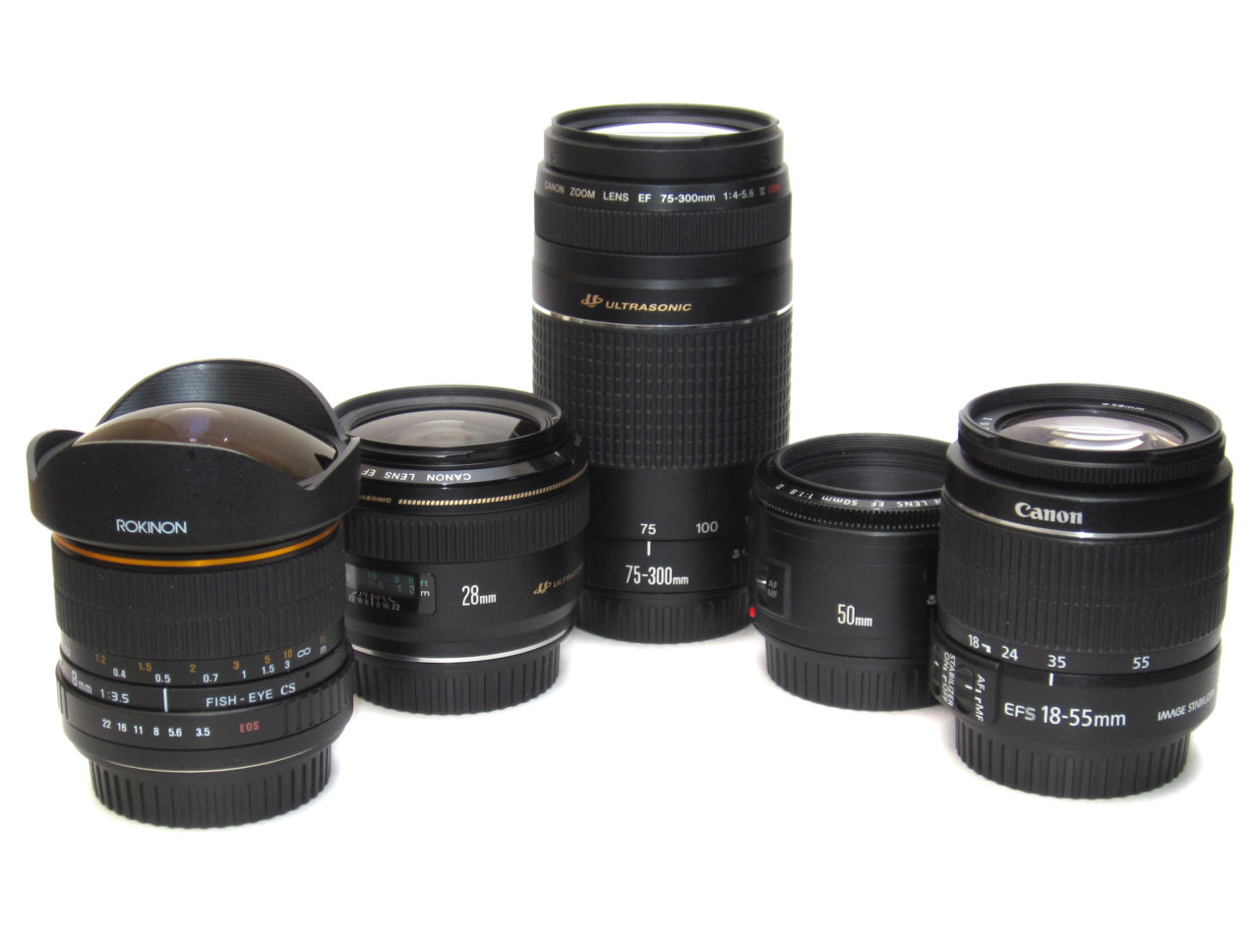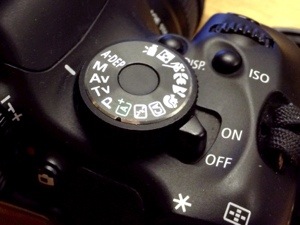The easiest way to learn about DSLRs and how to use them, outside the automatic functions, is to understand quickly what is happening inside the camera and how we, as users can control the actions involved.
Background
A two main parts of a DSLR is the lens and the sensor. Think of the camera sensor as a blank slate, and every time you click the shutter button, you’re letting light coming in through a hole, exposing the sensor which then produces your image. If you make the hole in your lens smaller, less light comes in. Similarly, if you lower the time that the sensor is exposed, you also let less light in. The hole is called the aperture and the time the sensor is exposed is called the shutter speed. Now, we can go more in detail but I think it’s easier just to learn these things from experience and see how the images differ based on what settings you use.
First, let’s get familiar with the basic DSLR controls. Auto, P, S, A, and M. Let’s start with P. P, stands for program mode, and is the easiest way to have semi-automatic control while not having to think about little details. We can go back and talk about this later. S, shutter priority mode, allows you to change the speed of your shutter, controlling the time an image is exposed. The longer your shutter is exposed, the more light is let in which can give you those light streaks seen in street/highway photography but also makes you prone to taking blurry images. Anything shorter than 1/100 second is about where camera shake can be eliminated. I would recommend tripod shooting at anything slower. A, aperture priority mode, controls the size of the hole in the lens that light comes through. You’ve probably heard of f stops or f-some number. These f values are kinda counterintuitive. f/22 is a smaller opening than f/2.8. You can think of these as fractions of the amount of light. 1/22 is less than 1/2.8. When would you use a smaller aperture versus a larger one? The larger the aperture, and smaller the fvalue, the larger the depth of field is going to be. The depth of field is the “blurriness” behind a subject when the subject is in focus. This is usually a signature of DSLR photography. If you want everything to be in focus, you would want to use a smaller aperture, aka higher f value.
Now these two priority modes allow you to shoot with some control but it still isn’t fully manual. Shutter priority allows you to choose the speed but it will automatically compensate for the change by changing the aperture. Let’s use an example again. If I wanted to shoot a soccer game, I would need a fast speed to capture the movement, so let’s say I’m shooting at 1/200 second. To compensate for this, the camera would open up the aperture since I’m letting less light in than at 1/100 second. This is done by a light metering system inside the camera. If we were in aperture priority mode and we didn’t want the soccer player to be the only thing in focus, and let’s say we wanted to shoot so the whole field is in focus, we would have to use aperture priority mode to tell the camera we wanted a small aperture. The trade off here would be that the camera would force your shutter speed to a slower speed, 1/50 sec or so and you will get blurry players since the speed is too slow. Manual allows you to shoot with control over both however manual’s usually not necessary unless you have ways to compensate for insufficient light which would occur when you combine both scenarios above. A flash or something along those lines would be used. Let’s not worry about that for now. Before you consider flash, let’s talk about the last main component of DSLRs.
ISO, allows you to control the sensitivity of light captured by your camera. ISO 100 would be less sensitive than ISO 1600 and so on. In the case of night time photography, you would want a high ISO however the tradeoff here is noise. Noise is the fuzzy colored stuff that comes up in your images when shooting mainly seen in night photography. Most beginner DSLR cameras produce usable images up to ISO 1600 or even 3200 but I usually don’t go that high unless I have no other option. If you haven’t made the connection, you can see the relationship between ISO, aperture and shutter speed. Increasing one and decreasing another by “a stop” will produce essentially the same image. These stops allow you to make tradeoffs according to what is necessary or required by the scenario and this is essentially what Program mode does. P mode is a combination of S and A modes. Why shoot in S or A priority then? Really no reason unless you know you need a certain speed or aperture. Program allows for the camera to make the best decision that it thinks should occur. Sometimes, it doesn’t understand the context and therefore an image could be ruined. These missed shots often occur at night with a high dynamic range needed such as a very dark face in the shadow and a bright street light in the background. With photography, a lot of what you’re shooting doesn’t happen again so you want to make sure the camera behaves the way you expect it to. Personally, that means shooting in A or S mode if not completely M.






